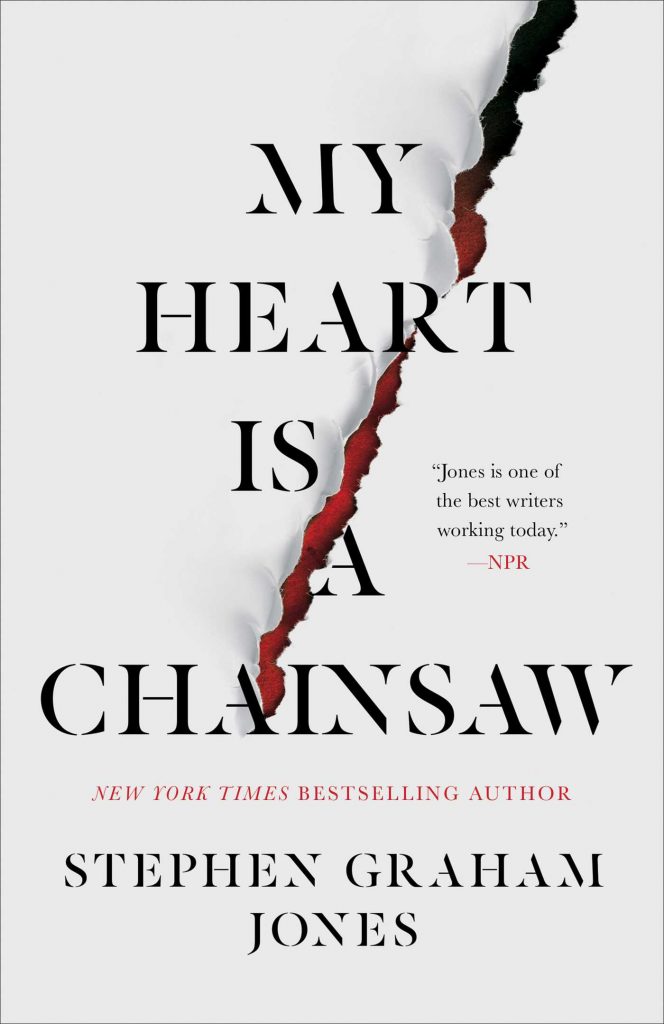Sometimes, history is more horrifying than fiction. Decades of Western media have siphoned Indigenous culture and folklore for inspiration within the horror genre, resulting in such classics as the novels Pet Sematary (book 1983), The Trickster (1995) and films like Ravenous (1999) and Antlers (2021). The creation of tropes such as cursed burial grounds, monstrous beings, uncanny rituals, and Nature’s supernatural retribution perpetuate colonial discourse of racializing Native bodies and cultures. Parallelly, those years have demonstrated a reclamation of both culture and genre. Indigenous authors, filmmakers, and creators have injected their unique visions into traditional horror narratives, simultaneously celebrating culture and mythology, mediating themes such as history, Post-colonialism, Native identity, and land ownership. As a result, such novels as Muriel Gray’s Tracks (1988), and Owl Goingback’s Crota (1996) and more recent films such as Rodrick Pocwathcit’s The Dead Can’t Dance (2010) and Quebec’s own Blood Quantum (2019) by Jeff Barnaby explore and celebrate Indigenous culture through lenses of zombie apocalypses, clever tricksters, and killer-dinosaurs.

Within this body of work, one finds Stephen Graham Jones. A Blackfoot American author and professor of English at the University of Colorado, Jones has published more than 30 novels before the age of 50, from westerns to science fiction to supernatural horror. Furthermore, Jones is no stranger to the Indigenous or horror genres, exploring themes of Native tradition and identity in his supernatural thriller The Only Good Indians (2020) and horror conventions in his slasher fiction The Last Final Girl (2012). His most recent work, the slasher fiction My Heart Is A Chainsaw (2021), radically redefines both.
In the Idahoan rural town of Proofrock, half-Blackfoot high school senior Jade Daniels navigates her quickly gentrifying environment through her encyclopaedic knowledge of slasher films. When mutilated bodies start dropping along the town’s recent lakeside development project, Terra Nova, she recognizes the inevitable patterns and tropes only seen in her favourite films and plunges the reader into a terrifying narrative that blurs the boundaries between fiction and reality. Jones skillfully dissects the codes and conventions of Indigenous horror as a genre, creating new avenues to explore Native-centric themes. Jones focuses on creative process, calling attention to the novel’s treatment of genre through postmodern techniques such as intertextual referencing and genre mixing. As a result, the author creates a hyperconscious text that partakes in and critiques genre conventions, strengthening Native themes through postmodern motifs. My Heart Is A Chainsaw explores Indigenous themes of identity, post-colonialism, and land ownership through postmodern treatment of the slasher genre, creating a fresh, original work to explore Native presence.
Jones’s novel begins as a slasher genre, adhering to tropes such as small-town settings, impotent adults, high body counts, and gory kill scenes. However, through slasher obsessed Jade Daniels, the novel breaks down these codes and conventions to their formulaic elements, allowing for the analysis, discussion, and critique of the genre. Throughout the novel, Jade gives in extra-credit papers on any particular subject to her history teacher to pass the class. The subject of these assignments? Slasher films. Aptly called “Slasher 101,” these papers, spread intervally across chapters, outline the history of the slasher genre and discuss tropes and cliches such as revenge motives, Final Girls, signature weapons, and red herrings (Jones). These papers are rife with postmodern referencing, invoking iconic films such as Halloween (1978), Friday the 13th (1980), A Nightmare on Elm Street (1984) and Scream (1996) in their discussion of the genre.
By calling attention to the formula which makes up its construction, the novel becomes a hyperconscious text, allowing both character and reader to recognise and renegotiate generic constraints. This discussion over what constitutes a slasher opens opportunities for innovation. Familiar codes and conventions of what “isn’t on script […] in the genre, isn’t a trope” are re-evaluated. Consequently, tropes such as the Final Girl, setting, and even the slasher itself are subverted, “bleed[ing] beyond [their] […] initial scope.” Through these subvertions, this postmodern text enables innovation within the slasher genre, allowing the author to explore and reinvent Native themes through popular horror tropes. To any horror fan, this text is a love letter to the genre. Like Jade Daniels, readers will recognise those elements of the slasher film they have grown to love over the years. Also, readers engage in active discussion with the text, as the author expands our understanding of what makes a slasher film and what themes could be explored. Jones not only teaches what a slasher film should be, but what the slasher could be.

Through horror, Jones provides a familiar lens for readers to introduce and explore Native themes. Notably, the theme of identity weighs heavily throughout the novel. Evoking his protagonist, Jade Daniels, a half-Blackfoot slasher film fanatic, the author mediates her struggle with heritage through her comprehensive view of the genre’s framework. Specifically, Jade negotiates her identity with the Final Girl, the protagonist archetype that survives the massacre and finally vanquishes the killer in a slasher film. To Jade, characters like Halloween (1978)’s Laurie Strode and Friday the 13th Part I (1980)’s Alice Hardy are aspirational models; she views them as “good […], uncomplicated [and] have these reserves of courage […] inside them” . To Jade, Final Girls are static yet established cultural bodies, whose place within the slasher genre, and popular culture, are well-defined. Jade finds it paradoxical to align herself with these characters, as her own cultural body remains turbulent. Jade knows that identifying with her cultural identity, which she views through her abusive and alcoholic father, implies internalizing cultural trauma, cyclical violence, and racism, and so actively resists. She refuses to connect with the reductionist caricature he has become as a result of systemic discrimination, “wincing from her dad […] painted like Johnny Depp from The Lone Ranger”.
Consequently, within this liminal space, Jade sees Final Girls everywhere except within, as they are “everything [she] wished she could have been, had she not grown up where she did, how she did” . However, the Final Girl is formed, according to Jade and the slasher genre, by trauma, and their ability to overcome it. Like a Final Girl who finally stops running, and faces their attacker, Jade too must confront the weight of her heritage. To accept her cultural body and herself, Jade must, like Final Girls delivering their death blows to the slasher, let out “every ounce of anger and rejection, all the unfairness and resentment,” incorporating the wholeness of Indigenous identity . By acknowledging the past, Jade can move forward like a Final Girl. The author masterfully implements the trope of the Final Girl as Jade’s journey through healing and cultural identification.
Jones also explores postcolonial themes of land ownership through slasher conventions of setting. Faithful to the genre, the author sets his novel within an isolated and small town, the perfect hunting ground for a masked killer. My Heart Is A Chainsaw is set high in the Idaho mountains, in the town of Proofrock, insulated from time by a vast national forest, a perpetual 80s horror movie set. However, across the town’s body of water—Indian Lake—a conglomerate of elitist lawyers, real-estate titans, and media moguls seek to develop the site of Camp Blood (a lovely homage to Friday’s Camp Crystal Lake). The site of a massacre decades before, Camp Blood will be Terra Nova, a gated community containing the summer mansions of the rich and famous. By gentrifying his rural slasher setting, Jones subtly echoes colonial practices of land grab and removal. Similar to traditional Indigenous narratives of cultural practices and land sovereignty, The citizens of Proofrock are deeply embedded within their environment, their history, local traditions, and businesses are part of Proofrock and Indian Lake. So, when the struggling town has no choice but to allow the colloquially known “Founders” to develop their land across the lake, they must begrudgingly accept the investment of capital desperately needed to revitalize the town. In doing so they’re selling more than land, “they’re selling Proofrock,” the essence of their cultural identity. However, Proofrock will be long forgotten by the Founders, who are more concerned with “mak[ing] the other side of the lake, pretty […] and pristine,” creating a wealthy community that excludes them from Indian Lake. The author subtly links these practices of gentrification to the history of colonialism and western expansion, in which the North American governments strong armed Indigenous nations of their land rights through tricky land agreements and violence, restricting their cultural mobility to suffocating reservations.
Through Camp Blood, Jones also stresses colonial themes of suppressing history. Similar to Friday the 13th’’s Camp Crystal Lake, Indian Lake’s Camp Blood was the site of a summer camp terrorized by a slasher decades before the events of the novel, and now part of the development of Terra Nova. To slasher-obsessed Jade, this a transgression bordering the profane. To her, Camp Blood is almost holy ground, “its sacrilege […] and you don’t be disrespectful about soil an actual slasher has walked across.” Once again, the author implements slasher conventions of setting to covertly echo colonial practices of disregarding the histories of unceded lands. Consequently, the “ghosts of all the kids murdered on those grounds” are disregarded like stolen Indigenous burial grounds or sacred sites, “circling the drain of history together.” By gentrifying the slasher genre’s setting, Jones underscores postcolonial themes of land grab, removal, and suppressing history.
Stephen Graham Jones’s My Heart Is A Chainsaw is a brilliant innovation in the slasher and Indigenous horror genres, implementing postmodern techniques to create a narrative that invokes postcolonial themes such as heritage and land sovereignty, while actively participating in negotiating its positionality within the slasher. The author creates a conscious text, creating a slasher fiction conscious of its formulation, permitting an intertextual conversation between reader, text, and genre. By exploring the construction and purpose of the Final Girl, Jones subtly explores themes of cultural trauma and identity. Through his subversion of setting, in which the isolated, rural town faces gentrification from external forces, Jones echoes colonial practices of land grabbing and the suppression of history. My Heart Is A Chainsaw is a machete that cleaves into the horror genre’s heart, allowing readers to see what truly makes the heart palpitate, the blood race, and the chainsaw buzz.

1 Comment